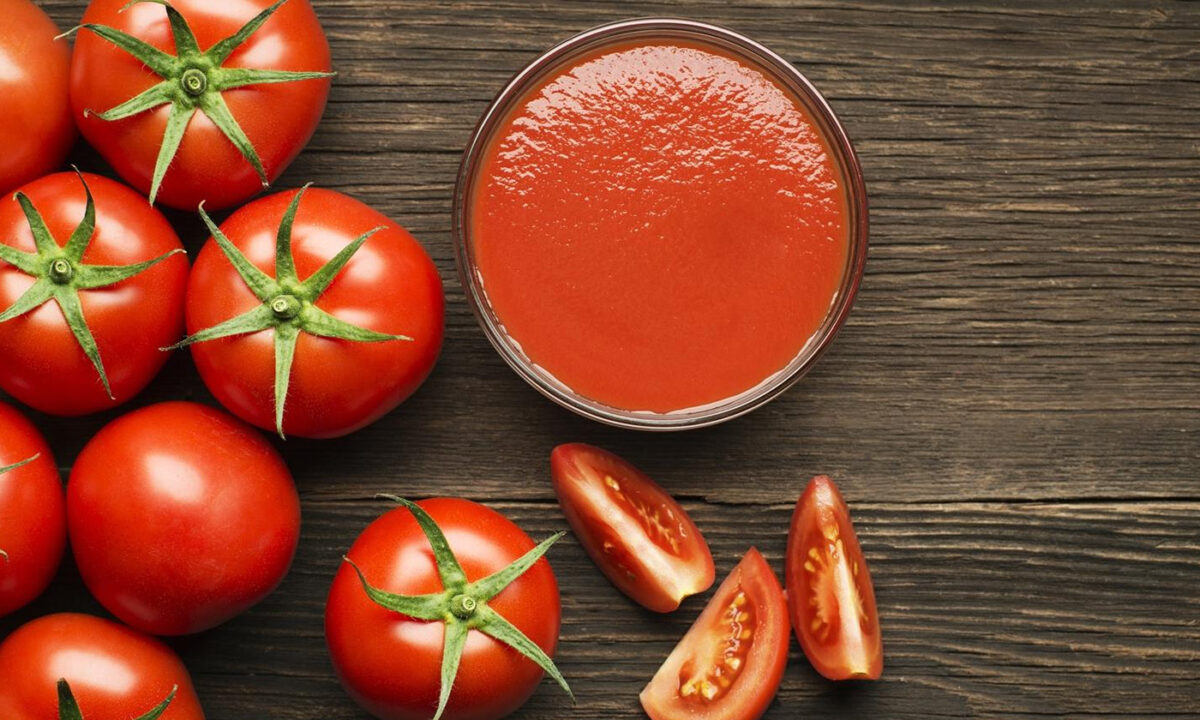


Tomatoes belong to the Solanaceae (nightshade) family and are widely cultivated all over the world. Colorful and ripe with sweet, tangy flavor, tomatoes are a versatile culinary fruit that can be eaten raw or cooked into delicious dishes.
Tomatoes not only taste good but are also high in nutritional value. Rich in vitamins, minerals, fiber, protein, essential amino acids, monounsaturated fatty acids, carotenoids, phytosterols, and more—tomatoes are an excellent source of nutrients and bioactive compounds.
Let’s explore the benefits of tomatoes and the best ways to eat them.
Traditional Chinese Medicine (TCM) theory believes that the five colors and five flavors of food correspond to the five internal organs of the human body. The TCM classic “Yellow Emperor’s Canon of Internal Medicine: Dysfunction of the Five Zang Viscera, Chapter 10,” states:
“The color and taste are linked to the five internal organs. White and spicy should be for the lungs, red and bitter for the heart, green and sour for the liver, yellow and sweet for the spleen, and black and salty for the kidneys.”
“Red and bitter for the heart” means that red and bitter foods nourish the heart.
If we cut a tomato sideways, we can see that has four fluid-filled chambers similar to the ventricles of the heart. Chinese folklore says: “Form complements similar form,” and tomatoes are accordingly analogous both in color and shape.
What nutrients in tomatoes are good for the heart? Tomatoes contain lycopene, a red carotenoid with powerful antioxidant properties found to reduce the risk of cardiovascular disease. Studies in recent years have found that the antioxidant capacity of lycopene is twice that of β-carotene and 10 times that of vitamin E.
The redder the tomato, the higher its lycopene content. Tomatoes ripened at room temperature will contain more lycopene than those stored in the refrigerator. Ordinary nutrients are easily destroyed by heat during cooking, but fat-soluble lycopene is different. After cooking with fat, the absorption rate of lycopene may increase by two to three times. However, once it comes into contact with air, it is easily oxidized, so immediate consumption of open products or cooked tomato dishes is recommended for optimum nutrient absorption.
A research report published in the Journal of Functional Foods, in April 2018, found that cooked tomatoes can effectively assist probiotics to avoid erosion by gastric acid, thereby greatly promoting the health of the intestinal tract. Cooking tomatoes releases more antioxidants from tomatoes, including lycopene.
In addition to lycopene, tomatoes also contain a variety of antioxidants, such as β-carotene, vitamin C, lutein, and phenols, which can aid in the prevention of age-related macular degeneration and other eye diseases. Tomatoes can also effectively relieve menopausal symptoms such as anxiety, hot flashes, and irritability.
Tomatoes are good for skin health and eating them can help to prevent sunburn, which in turn may reduce the appearance of sunspots on the skin in later years.
Human clinical data also suggest that regular consumption of tomato paste can lessen UV-induced skin erythema.
Tomato eaten raw has the effect of promoting body fluid and quenching thirst. Body fluid is very important to the human body and when in sufficient amount moisturizes the skin, moistens the mucous membranes, and delivers nutrients to various internal organs. Stored within the joint bursa, its function is to lubricate the joints and maintain their flexibility.
Bad temper (irritation and heat in the heart), causes the body to lose water quickly, resulting in dry mouth, restlessness, poor sleep, and fatigue. Eating raw tomatoes while in this state can help reduce the internal fire. Put a tomato in your mouth and crush it without swallowing it immediately. Keep the tomato juice there for three to five minutes, then swallow. Doing this several times can improve many discomforts caused by anger.
During the summer, replacing hot tea with tomato water can aid in the prevention of high-temperature heatstroke.
Representatives of ancient traditional Chinese medicine include the Four Great Masters of the Jin and Yuan Dynasties, one of whom is Li Dongyuan, founder of the “spleen-stomach theory” of TCM. In his book “Treatise on the Spleen and Stomach,” he stated that “injury to the spleen and stomach can trigger all sorts of diseases.”
The spleen lies in the center of the abdomen, irrigating the liver, heart, lungs, and kidneys—organs considered in TCM to be the “four viscera in the south, east, north, and west.”
Tomatoes are good for the spleen and stomach because of their stimulating effect on the appetite.
People with weak spleen and stomach are prone to insufficient qi (vital energy) and blood, which will affect the liver. TCM believes that “the liver finds its pathway up to the eyes.” When the liver is weak, the eyes will tire easily and affect eyesight and visibility as well as cause drooling while sleeping. When these symptoms present a medicinal meal of “tomato stewed with pork ribs” could be a quick fix.
Preparation:
Cut 250 grams (about 8.8 ounces) of pork ribs into smaller pieces and place in a pan.
Add 500 cc (17 fluid ounces) of water, stew on low heat until it turns about 80 percent soft, then add 150 grams (about 5.3 ounces) of sliced tomatoes.
Add some ginger slices and salt and stew until fully soft. If so desired, add pepper to taste, and eat once or twice while hot.
